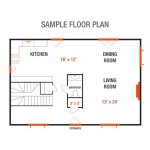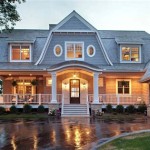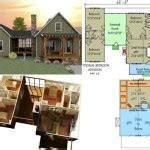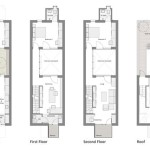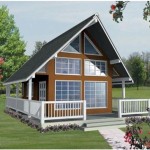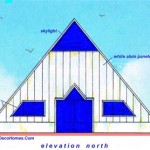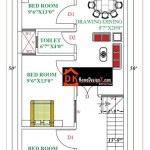Old farm house floor plans are detailed blueprints that outline the layout and design of traditional farmhouses. These plans typically encompass multiple levels, including a main floor, upper floor, and attic space, and feature specific room configurations and architectural elements.
Farmhouses were essential structures in rural communities, serving as both a living space for farmers and their families and a functional workspace for agricultural activities. The floor plans of these homes reflect the practical needs of rural life, with large kitchens for preparing meals, spacious rooms for gathering and sleeping, and ample storage space for tools and supplies.
In this article, we will explore the key characteristics of old farm house floor plans, examining the different room configurations, architectural styles, and design principles that have shaped these historic homes. We will also discuss the historical significance of these plans and their influence on modern-day home design.
Here are 10 important points about old farm house floor plans:
- Multi-level design
- Central kitchen
- Large gathering spaces
- Ample storage
- Functional workspaces
- Symmetrical facades
- Wrap-around porches
- Ornate trim and details
- Historical significance
- Influence on modern design
These plans offer valuable insights into the history and evolution of rural architecture, and continue to inspire contemporary home design with their timeless charm and practicality.
Multi-level design
Old farm house floor plans typically feature a multi-level design, with a main floor, upper floor, and attic space. This vertical layout served several practical purposes:
- Efficient use of space: By stacking rooms vertically, farmhouses could maximize their living space without taking up excessive land area. This was especially important for farms with limited acreage.
- Separation of living and working areas: The main floor was typically dedicated to living quarters, while the upper floor and attic were used for sleeping and storage. This separation helped to create a more organized and efficient living environment.
- Temperature control: The upper floor and attic were naturally warmer than the main floor, due to rising heat. This made them ideal for use as bedrooms during the cold winter months.
- Versatility: The attic space could be used for a variety of purposes, such as storage, sleeping, or even as a playroom or study area. This flexibility allowed farmhouses to adapt to changing needs over time.
The multi-level design of old farm houses not only served practical purposes, but also contributed to their unique architectural character. The varied rooflines and dormer windows created a visually interesting exterior, while the multiple levels added depth and dimension to the interior spaces.
Central kitchen
The kitchen was the heart of the old farmhouse, serving as a central gathering place for cooking, dining, and socializing. It was typically located at the center of the main floor, with easy access to both the living and dining areas. This central placement allowed the cook to easily interact with family members and guests, while also keeping an eye on the children and any activities taking place outside.
Farmhouse kitchens were typically large and spacious, with ample counter and storage space. This was necessary to accommodate the large quantities of food that were prepared and stored for the family and farmhands. The kitchen was also often equipped with a large wood-burning stove or cooktop, which provided both heat for cooking and warmth for the house. In some cases, the kitchen also included a built-in pantry or cupboard for storing food and supplies.
In addition to its practical functions, the kitchen was also an important social space in the farmhouse. It was a place where family and friends could gather to share meals, tell stories, and catch up on the day’s events. The large, open layout of the kitchen encouraged conversation and interaction, making it a central hub of the home.
The central kitchen was a defining feature of old farm house floor plans, reflecting the importance of food and family in rural life. It was a space that served multiple functions, from cooking and dining to socializing and gathering. The central placement of the kitchen also symbolized its central role in the life of the farmhouse and its occupants.
Large gathering spaces
Old farm house floor plans typically feature large gathering spaces, such as living rooms and dining rooms, that were designed to accommodate extended families and social gatherings. These spaces were often located on the main floor, near the kitchen, to facilitate interaction and socialization.
Living rooms were typically large and open, with high ceilings and multiple windows to create a sense of spaciousness and grandeur. They were often furnished with comfortable seating, such as sofas, armchairs, and rocking chairs, and included a fireplace or wood-burning stove as a focal point. The living room was a place where family members could gather to relax, read, or engage in conversation. It was also used for entertaining guests and holding special occasions, such as holiday celebrations and family gatherings.
Dining rooms were another important gathering space in the old farmhouse. They were typically located adjacent to the kitchen, with easy access for serving meals. Dining rooms were often large enough to accommodate large family gatherings, with long tables and chairs that could seat many people. In some cases, the dining room was also used as a multi-purpose space, serving as a place for family meals, entertaining guests, and even holding meetings or other social events.
The large gathering spaces in old farm house floor plans reflected the importance of family and community in rural life. These spaces were designed to accommodate the extended families and social networks that were common in farming communities. They were places where people could come together to share meals, celebrate special occasions, and simply enjoy each other’s company.
Ample storage
Old farm house floor plans typically include ample storage space to accommodate the needs of a large family and the demands of rural life. This storage space was essential for storing food, supplies, tools, and other items necessary for daily living and agricultural activities.
One of the most common storage spaces in old farm houses was the pantry. Pantries were typically located near the kitchen and were used to store non-perishable food items, such as canned goods, flour, sugar, and spices. Pantries were often large and well-stocked, as they needed to provide enough food to sustain a large family for extended periods of time. In some cases, pantries were also used to store other household items, such as linens, dishes, and cleaning supplies.
In addition to pantries, old farm houses often had other dedicated storage spaces, such as closets, cupboards, and built-in cabinets. These storage spaces were used to store a variety of items, including clothing, bedding, tools, and supplies. Closets were typically located in bedrooms and hallways, while cupboards and built-in cabinets were often found in the kitchen, dining room, and living room. These storage spaces were essential for keeping the farmhouse organized and clutter-free.
Old farm houses also often had outdoor storage spaces, such as barns, sheds, and granaries. These outdoor storage spaces were used to store agricultural equipment, tools, and supplies. Barns were typically used to house livestock, while sheds were used to store tools and equipment. Granaries were used to store grain and other crops. These outdoor storage spaces were essential for supporting the agricultural activities of the farm.
The ample storage space in old farm house floor plans reflects the practical needs of rural life. These storage spaces were essential for storing food, supplies, and equipment necessary for daily living and agricultural activities. They helped to keep the farmhouse organized and clutter-free, and they also played an important role in supporting the economic activities of the farm.
Functional workspaces
Old farm house floor plans typically include a variety of functional workspaces, such as kitchens, pantries, and workshops, that were designed to support the daily activities of rural life.
- Kitchens
Kitchens were the central hub of the farmhouse, where meals were prepared and families gathered. They were typically large and spacious, with ample counter and storage space. Kitchens were often equipped with a large wood-burning stove or cooktop, which provided both heat for cooking and warmth for the house. In some cases, kitchens also included a built-in pantry or cupboard for storing food and supplies. - Pantries
Pantries were essential for storing non-perishable food items, such as canned goods, flour, sugar, and spices. They were often located near the kitchen for easy access. Pantries were typically large and well-stocked, as they needed to provide enough food to sustain a large family for extended periods of time. - Workshops
Workshops were dedicated spaces for repairing tools, equipment, and machinery. They were typically located in a separate building, such as a barn or shed, to keep noise and dirt away from the main house. Workshops were often equipped with a workbench, tools, and supplies. - Other workspaces
In addition to kitchens, pantries, and workshops, old farm house floor plans may also include other functional workspaces, such as sewing rooms, dairies, and smokehouses. These workspaces were designed to support specific activities, such as sewing clothes, making dairy products, and preserving meat.
The functional workspaces in old farm house floor plans reflect the practical needs of rural life. These workspaces were essential for preparing food, storing supplies, repairing equipment, and engaging in other activities necessary for daily living and agricultural production. They helped to make the farmhouse a self-sufficient and efficient home.
Symmetrical facades
Symmetrical facades are a defining characteristic of many old farm house floor plans. Symmetry is achieved when the two halves of a building mirror each other, creating a sense of balance and order. This architectural principle has been used for centuries to create visually appealing and harmonious structures.
In the context of old farm houses, symmetrical facades were often used to convey a sense of stability and permanence. The balanced proportions and regular arrangement of windows and doors created a sense of order and predictability that was reassuring to those who lived and worked on the farm. Symmetry also helped to create a sense of grandeur and importance, which was appropriate for the central role that the farmhouse played in the community.
There are many different ways to achieve symmetry in a facade. One common approach is to use a central axis, with the front door located in the center of the house. The windows and doors on either side of the central axis are then arranged in a mirror image of each other. Another approach is to use a symmetrical arrangement of wings or pavilions. In this case, the house is divided into two or more sections, with each section having its own symmetrical facade.
Symmetrical facades were not only aesthetically pleasing, but also practical. By arranging the windows and doors in a symmetrical way, architects could ensure that the interior spaces were well-lit and ventilated. Symmetry also helped to create a sense of flow and movement within the house, making it easier for people to move from one room to another.
Wrap-around porches
Wrap-around porches are a distinctive feature of many old farm house floor plans. These porches extend around two or more sides of the house, providing a sheltered outdoor space that can be used for a variety of purposes.
Wrap-around porches were originally designed to provide shade and protection from the elements. They allowed farmers and their families to enjoy the outdoors without being exposed to the sun or rain. Porches also provided a place to sit and relax, or to engage in activities such as reading, sewing, or talking with neighbors.
In addition to their practical functions, wrap-around porches also added to the aesthetic appeal of farm houses. They created a sense of grandeur and hospitality, and they helped to connect the house to its surroundings. Porches were often decorated with gingerbread trim and other decorative elements, which added to their visual charm.
Wrap-around porches were particularly well-suited to the climate and lifestyle of rural America. They provided a shaded and protected outdoor space that could be used for a variety of activities, from relaxing to entertaining. Porches also helped to create a sense of community, as they provided a place for neighbors and friends to gather and socialize.
Today, wrap-around porches are still a popular feature of farm houses and other types of homes. They continue to be valued for their practical and aesthetic benefits, and they add a touch of charm and character to any home.
Ornate trim and details
Old farm house floor plans often feature ornate trim and details that add to their visual appeal and architectural character.
- Gingerbread trim
Gingerbread trim is a type of decorative woodwork that is often used to embellish the eaves, gables, and porches of farm houses. It is characterized by its intricate patterns and whimsical shapes, which resemble the gingerbread cookies that were popular in the Victorian era. Gingerbread trim adds a touch of charm and character to farm houses, and it can also help to highlight the architectural details of the home.
- Bay windows
Bay windows are projecting windows that extend outward from the main wall of the house. They are often used in farm houses to create a more spacious and inviting interior. Bay windows provide additional natural light and ventilation, and they can also offer a panoramic view of the surrounding landscape. In some cases, bay windows are also used to create a cozy seating area or reading nook.
- Porticos
Porticos are covered entrances that are supported by columns or pillars. They are often used in farm houses to create a grand and welcoming entryway. Porticos provide shelter from the elements and they can also add a touch of architectural interest to the home. In some cases, porticos are also used to create a shaded outdoor space that can be used for relaxing or entertaining.
- Ornamental moldings
Ornamental moldings are decorative strips of wood or plaster that are used to add visual interest to walls, ceilings, and doorways. They are often used in farm houses to create a sense of grandeur and sophistication. Ornamental moldings can be simple or elaborate, and they can be used to create a variety of different looks.
The ornate trim and details in old farm house floor plans reflect the craftsmanship and attention to detail that was common in the Victorian era. These details add to the visual appeal of farm houses and they can also help to create a sense of history and place.
Historical significance
Old farm house floor plans are not only architecturally significant, but also historically significant. They provide a glimpse into the lives and lifestyles of our ancestors, and they can help us to better understand the history of rural America.
- Reflection of rural life
Old farm house floor plans reflect the practical needs and values of rural life. The large kitchens, pantries, and workspaces speak to the importance of food production and self-sufficiency. The wrap-around porches and bay windows provided opportunities for relaxation and socializing, while the ornate trim and details added a touch of beauty and refinement to the home.
- Evidence of changing technology
Old farm house floor plans also provide evidence of changing technology. The evolution of kitchen design, from open hearths to wood-burning stoves to modern appliances, can be seen in the floor plans of farm houses built over time. The addition of indoor plumbing and electricity also had a significant impact on the design of farm houses.
- Connection to the land
Old farm house floor plans often reveal a strong connection to the land. The placement of the house on the property, the orientation of the windows, and the design of the outbuildings all reflect the farmer’s understanding of the natural environment. Farm houses were designed to take advantage of natural resources, such as sunlight, wind, and water.
- Symbols of community
Old farm house floor plans can also be seen as symbols of community. The large gathering spaces, such as the living room and dining room, speak to the importance of family and community in rural life. The wrap-around porches and outdoor spaces provided opportunities for neighbors and friends to gather and socialize.
Old farm house floor plans are a valuable resource for historians and anyone interested in the history of rural America. They provide a unique window into the lives and lifestyles of our ancestors, and they can help us to better understand the evolution of American architecture and culture.
Influence on modern design
Old farm house floor plans have had a significant influence on modern design, both in terms of their architectural features and their overall aesthetic. Here are a few key ways in which old farm house floor plans have shaped modern home design:
- Open floor plans
Many modern homes feature open floor plans, which are characterized by a free flow of space between the kitchen, dining room, and living room. This type of floor plan is often used to create a more spacious and inviting interior. Open floor plans were first popularized in the late 19th century, when architects began to design farm houses with fewer walls and more open spaces. This design allowed for more natural light and ventilation, and it also made it easier for families to interact with each other.
- Large kitchens
Kitchens are often the heart of the home, and this is especially true in modern farm houses. Modern farm house kitchens are typically large and spacious, with ample counter and storage space. This design reflects the importance of food and family in rural life. Large kitchens provide a place for families to gather and cook meals together, and they also make it easier to entertain guests.
- Wrap-around porches
Wrap-around porches are a distinctive feature of many old farm houses, and they have also become popular in modern home design. Wrap-around porches provide a sheltered outdoor space that can be used for a variety of purposes, from relaxing to entertaining. They also add to the curb appeal of a home and can help to create a sense of connection to the outdoors.
- Rustic finishes
Many modern farm houses feature rustic finishes, such as exposed beams, shiplap walls, and reclaimed wood floors. These finishes add a touch of warmth and character to the home, and they can help to create a more relaxed and inviting atmosphere. Rustic finishes are also a nod to the history of farm houses, and they can help to create a sense of connection to the past.
In addition to these specific architectural features, old farm house floor plans have also influenced the overall aesthetic of modern home design. The simple, symmetrical lines of farm houses have been adopted by many modern architects, and the use of natural materials, such as wood and stone, is also a common feature of modern farm house design. As a result, modern farm houses often have a warm and inviting feel, and they are often seen as a symbol of simpler times.










Related Posts

